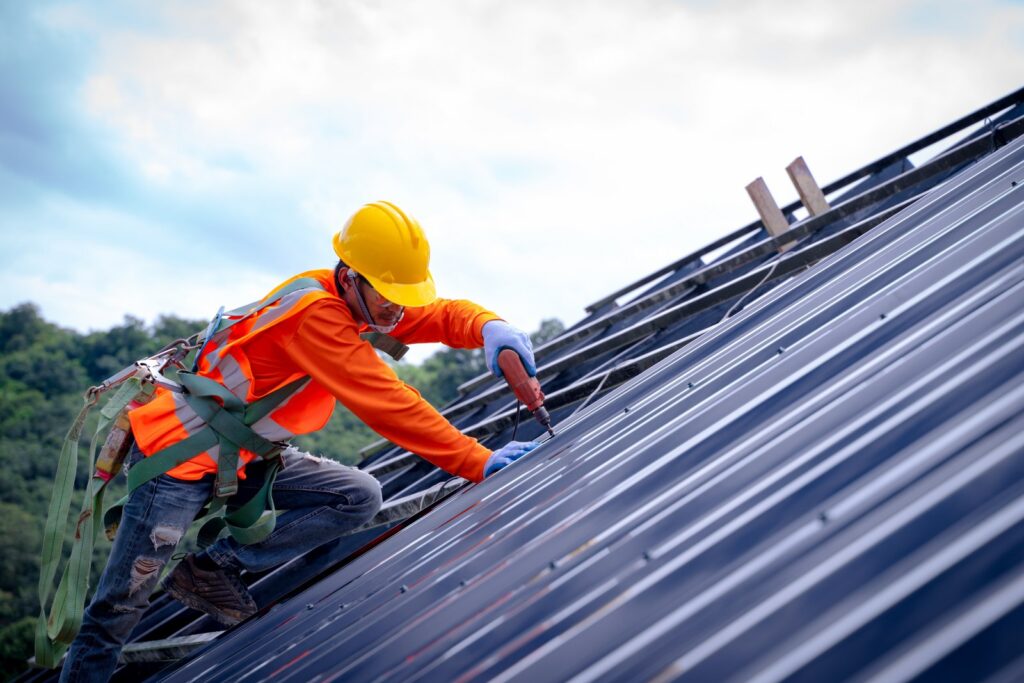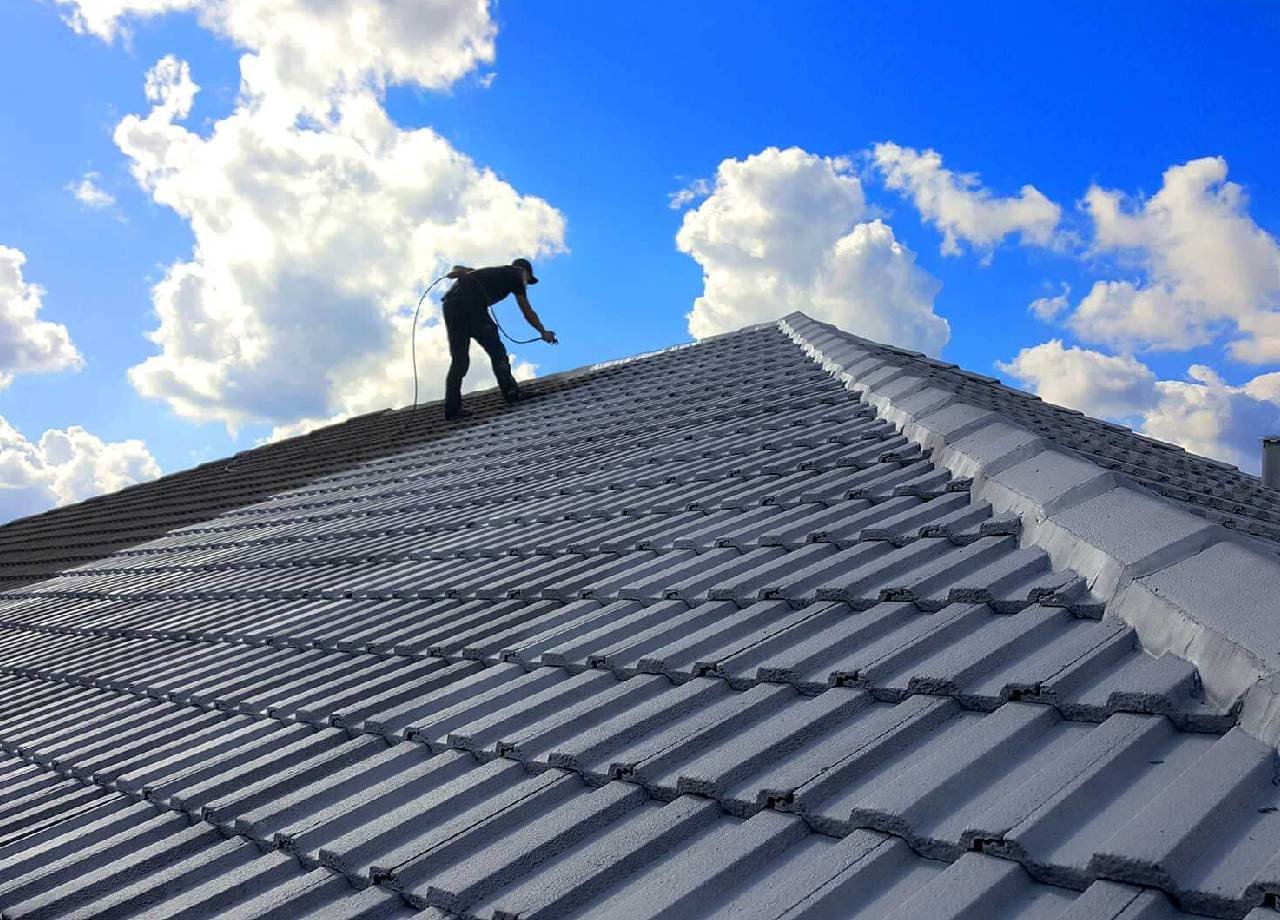Cleveland Roofing Specialists: Top Roofing Solutions for Homes and Businesses
Cleveland Roofing Specialists: Top Roofing Solutions for Homes and Businesses
Blog Article
A Comprehensive Overview to Effective Roof Apartment Roof Installment
The ins and outs of flat roof installment demand a careful strategy, starting with an extensive understanding of different flat roofing types and the crucial materials needed for optimum performance. An effective setup pivots not just on the option of materials but also on the preparation and implementation of each action involved in the process.
Recognizing Flat Roof Covering Types
When considering flat roofing systems, it is vital to comprehend the different types offered, as each deals distinctive advantages and negative aspects customized to details requirements. One of the most typical kinds of level roofs consist of Built-Up Roof covering (BUR), Changed Bitumen, and Single-Ply membranes.
Built-Up Roofing includes multiple layers of asphalt and gravel, providing excellent toughness and climate resistance. It is particularly valuable in areas vulnerable to extreme weather but may call for even more upkeep because of its complex building.
Customized Bitumen is a popular choice for its convenience of setup and flexibility. It frequently utilizes a torch-applied or self-adhesive technique, which can be useful for fast repair services and long-lasting efficiency. Nonetheless, its life expectancy can be shorter contrasted to BUR.
Single-Ply membrane layers, including Thermoplastic Olefin (TPO) and Ethylene Propylene Diene Monomer (EPDM), are recognized for their light-weight nature and energy efficiency. These materials are typically preferred for business structures because of their cost-effectiveness and simplicity of setup (Cleveland Roofing Specialists). However, they may not supply the very same level of insulation as other options.
Each roof covering type requires mindful factor to consider based upon climate, spending plan, and specific task needs.
Vital Products for Flat Roofing
A selection of crucial products are critical for the effective setup of level roof. The choice of products straight influences durability, performance, and overall performance.
Among the primary materials is the roof membrane layer, which can be built from various materials such as thermoplastic polyolefin (TPO), ethylene propylene diene monomer (EPDM), or PVC. Each kind offers one-of-a-kind advantages, consisting of UV resistance and versatility, which are vital for extended performance.
In addition to the membrane layer, insulation materials play a considerable role in energy performance. Rigid foam boards or polyisocyanurate insulation are prominent options, as they offer superb thermal resistance and dampness administration.
Additionally, roof covering adhesives and sealants are crucial for making sure a leak-proof installation. These items should be compatible with the selected membrane layer to avoid deterioration over time.
Preparing for Setup
Appropriate preparation is essential for a successful level roofing installation, as it lays the groundwork for a resilient and efficient roofing system. Begin by conducting a complete examination of the existing roof framework.
Next, gather all needed tools and materials, making sure that they meet industry standards. This consists of water-proof membrane layers, insulation, blinking, and fasteners. Familiarize yourself with the supplier's specifications, as adherence to these guidelines is crucial for guarantee functions.
Additionally, guarantee that the workplace is clear of particles and obstructions to help with effective and safe installment. Consider weather; stay clear of installment during heavy rainfall or extreme temperatures, which can impact material performance. Inform any type of occupants of the structure concerning the future work to guarantee safety and security and reduce interruptions. By taking these primary steps, you can boost the probability of a successful level roofing installment that fulfills both aesthetic and architectural demands.
Step-by-Step Installment Refine
With the groundwork established via complete preparation, the next stage entails carrying out the flat roof covering installation methodically. Begin by making sure that the architectural deck is totally free and tidy from debris. Next, install a vapor obstacle to protect against moisture build-up under the roof product. This step is critical for keeping the roof's stability gradually.
Complying with the vapor barrier installation, put down insulation boards, ensuring they fit securely together to minimize thermal linking. Safeguard the insulation with suitable bolts based on the roof covering kind and neighborhood building regulations. Once the insulation is in area, it's time to use the roof covering membrane layer. Depending upon the picked material-- such as TPO, EPDM, or modified bitumen-- set up the membrane according to the manufacturer's specs.
Make sure proper overlap at joints and edges to develop a watertight seal. Use adhesives, mechanical bolts, or warm welding as needed. Install flashing around borders, vents, and any kind of roof covering infiltrations to boost waterproofing. After installation, carry out a detailed evaluation to recognize any prospective problems before wrapping up the visit this website task, making certain a robust and reliable level roof covering system.
Maintenance Tips for Longevity
Regular upkeep is important to ensure the long life and performance of a level that site roof covering. One of the key jobs is to conduct regular examinations a minimum of two times a year, ideally in springtime and loss. During these inspections, look for signs of wear, such as blisters, cracks, or pooling water, which can suggest underlying problems.

Making certain proper drain is critical to protect against water buildup. Examine and clear rain gutters, downspouts, and scuppers to ensure unblocked water flow. Furthermore, evaluate seals around vents, skylights, and various other penetrations for any kind of indicators of degeneration, using caulk or sealer as needed to preserve a water tight barrier.
Last but not least, take into consideration specialist upkeep services every couple of years for thorough maintenances. By adhering to these maintenance tips, you can considerably expand the life of your flat roofing, guaranteeing it continues to be a trusted shield versus the aspects.
Final Thought
Reliable flat roofing system installation necessitates a systematic technique incorporating detailed assessments, product selection, and precise preparation. Sticking to the laid out steps during the setup process guarantees the correct application of roof membranes and insulation while enhancing waterproofing through efficient blinking setup. In addition, applying regular upkeep practices substantially adds to the long life of the roofing system. By complying with these guidelines, a resilient and trusted level roof service can be achieved, with the ability of standing up to various ecological problems.
The intricacies of level roofing system installment demand a thorough method, beginning with my explanation a thorough understanding of different flat roofing types and the important materials required for optimal performance.Appropriate prep work is important for an effective level roofing system installment, as it lays the foundation for a reliable and resilient roof system. After installation, conduct a comprehensive evaluation to recognize any kind of prospective issues prior to concluding the project, making certain a trustworthy and durable level roof system.

Report this page